Types of Birth Control: Which Birth Control is Best?
Since the 1960s, contraceptive medications have been used to prevent pregnancies. Today, millions of women use birth control pills every month to prevent pregnancies or to relieve painful periods. However, despite the Affordable Care Act (ACA) going into effect in 2012 and ensuring complete access to birth control, many women are still getting rejected by insurance companies.
What is Birth Control?
Refraining from intercourse, also known as abstinence, is the only way to prevent pregnancy with 100% certainty. Birth control on the other hand, is a form of contraception that is 99% effective at preventing pregnancy when taken regularly every day. There are various forms of birth control, including nonhormonal and hormonal.
How Effective is Birth Control?
Contraceptive methods, excluding condoms, do not protect against sexually transmitted diseases (STDs). The diagram below provides a comparison of the effectiveness of contraceptive methods that are available as over-the-counter (OTC) and prescription products.
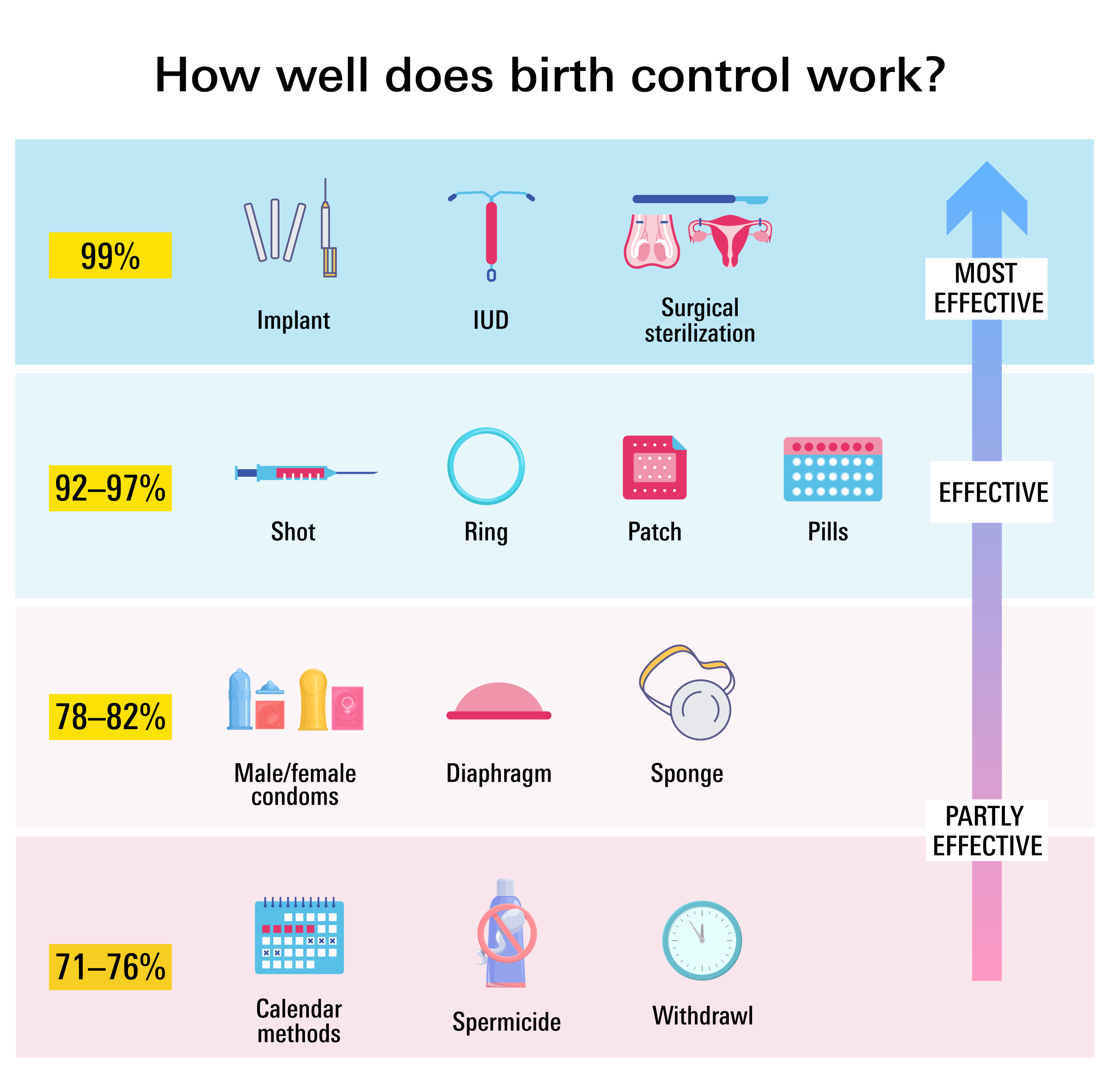
Nonhormonal Birth Control
Nonhormonal birth control, also known as barrier methods, builds a physical barrier between the sperm and the egg. Certain nonhormonal contraceptives may require your attention every time you have sexual intercourse, and others may last years or are permanent. Nonhormonal birth control includes:
1. Diaphragm
Used as a barrier method that is placed over your cervix (the opening of the uterus from the vagina), and used with a spermicide. It stays in place by sitting behind the pubic bone, and it doesn't protect against STDs.
Diaphragms should be left in for 6 hours after intercourse. It shouldn't be in place for more than 24 hours. This method can be used for up to 2 years. Diaphragms are available in the U.S. with a prescription
2. Foams, creams, suppositories, and jellies
These spermicides (substances that stop the sperm from getting to the egg) are used as a barrier method that's usually used with a condom and/or the diaphragm.
These spermicides are applied deep in the vagina (close to the cervix) right before intercourse where they melt, except for the foam, which bubbles. Spermicides slow down sperms and prevent them from entering the cervix.
3. Sponge
Used as a barrier method that's filled with spermicide and placed deep into the vagina before intercourse.
This method should be left in place for at least 6 hours after intercourse, but it can be used for up to 24 hours. It should be removed and thrown away after use.
Hormonal Birth Control
Hormonal contraceptives prevent the production of FSH (follicle-stimulating hormone) and LH (luteinizing hormone), thereby preventing ovulation (the release of an egg).
These types of birth control provide health benefits, such as lowering menstrual pain, menstrual irregularity, endometriosis, acne, ectopic pregnancy, noncancerous breast cysts/lumps, and risk of endometrial and ovarian cancer.
The FDA requires oral contraceptives to be dispensed with a Patient Package Insert (PPI), which includes important safety information, instructions on proper use, and what to do if you miss a pill.
Risks of Hormonal Contraceptives
Many hormonal contraceptives have a black box warning (the strictest warnings for prescriptions), that includes:
All estrogen-containing products (pills, ring, patch):
Due to the risk of serious cardiovascular events, do not use if you are greater than 35 years old and smoke.
Estrogen + progestin transdermal patch (Xulane):
Has an increased risk of blood clots, specifically venous thromboembolism (DVT/PE)–compared to COCs.
Types of Birth Control Pills
There are 2 types of birth control pills available:
1. Estrogen/progestin combinations
Available as a pill, patch, and vaginal ring.
Combined oral contraceptives (COCs): estrogen/progestin combination oral pills
Combined hormonal contraceptives (CHC): non-oral contraceptives that include both estrogen and progestin
COCs are primarily for women
who have menstrual cramps, premenstrual syndrome (PMS), acne, anemia (decreases blood loss), and perimenopause symptoms, such as hot flashes and night sweats.
COCs are also considered first-line treatment options for those who have polycystic ovary syndrome (PCOS), a hormonal disorder that causes infrequent, irregular, or prolonged menstrual periods, as well as endometriosis, where tissue grows outside of the uterus.
Most COCs involve 28 days (4 weeks) of pills, with 21–24 pills containing active hormone and the remaining pills containing no hormone. During week 4 (the inactive pill), bleeding occurs for 3–7 days.
Common side effects of COCs, due to estrogen, include:
- Nausea
- Breast tenderness
- Bloating
- Weight gain, which is due to fluid retention
- Increased blood pressure
- Bleeding between periods
2. Progestin-only options
Available as an injectable, pill, implant, and IUD.
Progestin-only pills (POPs) also known as 'mini-pills' do not contain any estrogen, and have 28 days of active pills in each pack.
POPs are primarily for women
who are lactating (breastfeeding) or have a history of blood clots and/or strokes and shouldn't take estrogen because it decreases milk production. Women who have migraines with aura are recommended to take POPs because it reduces migraines. Estrogen cannot be used with this type of migraine, due to the risk of stroke.
POPs must be taken within 3 hours of the scheduled time.
Common side effects of POP, due to progestin, include:
- Breast tenderness
- Headache
- Fatigue
- Mood changes
- Bleeding between periods
- Weight gain
Which Birth Control is Best for Me?
Before visiting your doctor, it may be helpful to have an idea of which type of birth control pill sounds right for you.
According to the FDA, all FDA-approved generic medications have the same active ingredients and the same strength as the brand name versions and are interchangeable (they work in the same way). All interchangeable medications may be substituted at the pharmacy without the need to consult your prescriber.
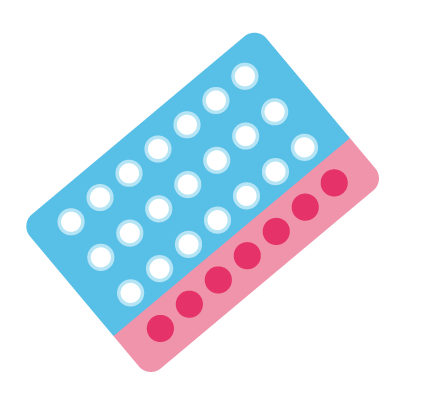 Pills
Pills
Monophasic pills contain only 1 level of active hormones and have the same dose of estrogen and progestin throughout the pill pack. The amount of hormones remains the same in each active pill during the month.
(Fe—includes iron supplements)
Aubra EQ, Aubra, Aviane, Falmina, Lutera, Orsythia
Buy Aubra EQ now: Levonorgestrel/ethinyl estradiol 0.1 mg/0.02 mg tablets
Tarina Fe 1/20 EQ, 1/20 Fe EQ, Gildess Fe 1/20, Junel Fe 1/20, Larin Fe 1/20, Microgestin Fe 1/20
Buy Tarina Fe 1/20 EQ now: Norethindrone acetate/ethinyl estradiol/ferrous fumarate 1 mg/20 mcg/75 mg tablets
Chateal EQ, Altavera, Chateal, Kurvelo, Levora, Marlissa, Aortia
Buy Chateal EQ now: Levonorgestrel/ethinyl estradiol 0.15 mg/0.03 mg tablets
Tarina 24 Fe, Blisovi 24 Fe, Junel Fe 24, Microgestin Fe, and Larin 24 Fe
Buy Tarina 24 Fe now: Norethindrone acetate/ethinyl estradiol/ferrous fumarate 1 mg/20 mcg/75 mg tablets
VyLibra, Estarylla, Mili, Mono-Linyah, MonoNessa, Ortho-Cyclen, Previfem, Sprintec
Buy Vylibra now: Norgestimate/ethinyl estradiol 0.25 mg/0.035 mg tablets
Cyred EQ, Apri, Cyred, Emoquette, Enskyce, Isibloom, Reclipsen
Buy Cyred EQ now: Desogestrel/ethinyl estradiol 0.15 mg/0.03 mg tablets
Yasmin and Ocella
Ethinylestradiol/drospirenone 0.03 mg/3 mg
Loestrin, Junel 1/20
Generic: Norethindrone acetate/ethinyl estradiol 1 mg/10 mcg, 2 tablets of 10 mcg ethinyl estradiol
Loestrin 24 Fe, Junel Fe 24
Generic: Norethindrone acetate/ethinyl estradiol 1 mg/10 mcg, 2 tablets of 10 mcg ethinyl estradiol
Jasmiel, Loryna, Nikki and Yaz
Buy Jasmiel now: Drospirenone/ethinyl estradiol 3 mg/0.02 mg tablets
Lo Loestrin Fe
Generic: 24 tablets of norethindrone acetate/ethinyl estradiol 1 mg/10 mcg, 2 tablets of 10 mcg ethinyl estradiol, and 2 tablets of 75 mg ferrous fumarate
Biphasic pill packs mimic the estrogen and progestin levels during a menstrual cycle.
Azurette, Mircette, Kariva
Generic: 21 tablets of desogestrel/ethinyl estradiol 0.15 mg/0.02 mg, 5 tablets of ethinyl estradiol 0.01 mg and 2 inactive tablets
Triphasic pill packs mimic the estrogen and progestin levels during a menstrual cycle. Triphasic refers to the number of times the amounts of the hormones change; 3 times.
Tri-VyLibra, Ortho Tri-Cyclen, Tri-Estarylla, Tri-Linyah, Tri-Mili, Tri-Previfem, Tri-Sprintec, TriNessa
Buy Tri-Vylibra now: Norgestimate/ethinyl estradiol 0.180 mg/0.035 mg, 0.215 mg/0.035 mg, 0.250 mg/0.035 mg tablets
TriVyLibra Lo, Ortho Tri-Cyclen Lo, Tri-Lo-Estarylla, Tri-Lo-Marzia, Tri-Lo-Sprintec
Norgestimate/ethinyl estradiol 0.180 mg/0.025 mg, 0.215 mg/0.025 mg, 0.250 mg/0.025 mg tablets
Velivet, Cyclessa
Quadriphasic pill packs mimic the estrogen and progestin levels during a menstrual cycle. Hormone dose changes over 21-24 days to mimic the menstrual cycle (4 phases).
Natazia
Generic: Estradiol valerate 3.0 mg, estradiol valerate/dienogest 2.0 mg/2.0 mg, estradiol valerate/dienogest 2.0 mg/3.0 mg, estradiol valerate 1.0 mg
Extended cycle formulations include 84 days of active hormonal pills followed by 7 days of inactive or very low-dose estrogen pills. With this schedule, bleeding occurs every 3 months, rather than every month.
Seasonale, Jolessa, Setlakin, Seasonique, Quansense, Introvale
Generic: Levonorgestrel/ethinyl estradiol 0.15 mg/0.03 mg tablets
Seasonique, Ashlyna, Daysee, Camrese, Jaimess
Generic: 84 levonorgestrel/ethinyl estradiol 0.15 mg/0.03 mg tablets, 7 ethinyl estradiol 0.01 mg tablets
Continuous formulations may completely suppress bleeding (no period occurs). This formulation includes only hormonal pills, no inactive pills, and is used continuously.
Amethyst, Lybrel, Dolishale
Generic: Levonorgestrel/ethinyl estradiol 0.09 mg/0.02 mg tablets
 Patch
Patch
Xulane
Transdermal patch (placed on the skin) that is applied once a week for the first 3 weeks, and then taken off during week 4. Can be placed on clean, dry skin of the butt, stomach, upper arm, or upper torso.
 Ring
Ring
NuvaRing—Vaginal ring that is inserted into the vagina once a month. It is kept in for 3 weeks and taken out for 1 week before replacement with a new ring.
Annovera—Vaginal ring that is reusable. It is inserted and kept in place for 3 weeks, then removed for 1 week.
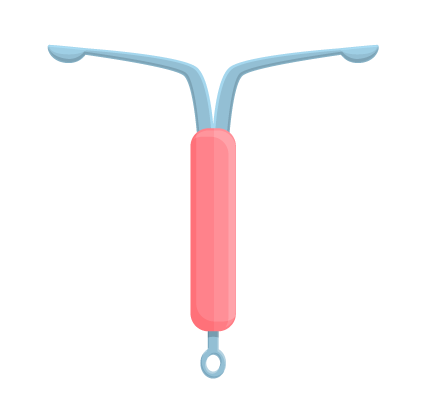 Intrauterine Device (IUD)
Intrauterine Device (IUD)
IUDs are long-acting and reversible forms of contraceptives. These devices are not dispensed from your local pharmacy. They must be placed and removed by a trained healthcare professional.
Intrauterine devices
These are hormonal IUDs that cause lighter menstrual bleedings (periods) and little to no crampings.
Mirena (FDA approved for heavy periods), Skyla, Kyleena, Liletta
The copper-T IUD
Can be used for up to 10 years, but cause heavier periods and cramping.
Paragard
The implant
A plastic rod that is placed subdermally and releases the progestin etonogestrel for 3 years.
Nexplanon
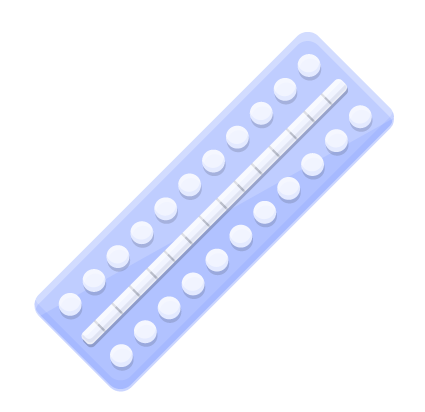 Progestin-Only Pill (The Mini Pill)
Progestin-Only Pill (The Mini Pill)
According to the FDA, all FDA-approved generic medications have the same active ingredients and the same strength as the brand name versions and are interchangeable (they work in the same way). All interchangeable medications may be substituted at the pharmacy without the need to consult your prescriber.
All taken daily with no placebo/inactive days.
Lyleq, Camila, Heather, Erinn, Nora-BE, Jolivette, Heather, Incassia, Nor-QD, Tulana
Buy Lyleq now: Norethindrone 0.35 mg tablets
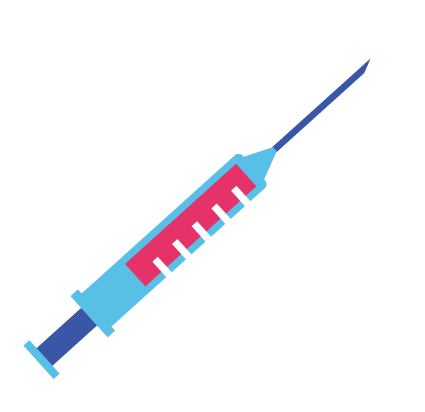 Injection
Injection
Depo-Provera
Contains depot medroxyprogesterone (DMPA) and is injected every 3 months.
How Soon does Birth Control Take to Work?
The pill can take up to 7 days to start working in preventing pregnancy. It is recommended that you use another form of birth control at this period. It can take up to 3 to 4 months to notice true results if the tablet is taken to treat symptoms like acne or abnormal bleeding.
Is My Birth Control Covered under the Affordable Care Act (ACA)?
In 2012, the United States president signed the birth control mandate into law as part of the Affordable Care Act (ACA). Many birth control methods should be fully covered by insurance without any out-of-pocket costs since the ACA has been mandated. However, there have been cases where insurance providers decline to cover certain birth control methods, which in essence is a violation of the law. The ACA provides full access to birth control, yet there are still challenges faced by many women due to insurers.
Talk With Your Doctor
If you're unsure about which type of birth control to use, consult your doctor. Each option is effective, but your alternatives may vary depending on your personal health history, lifestyle, and desired goals.
Talk to your healthcare provider today and send your prescription to Marley Drug. Save up to 95% compared to your local pharmacy by using Marley Drug.